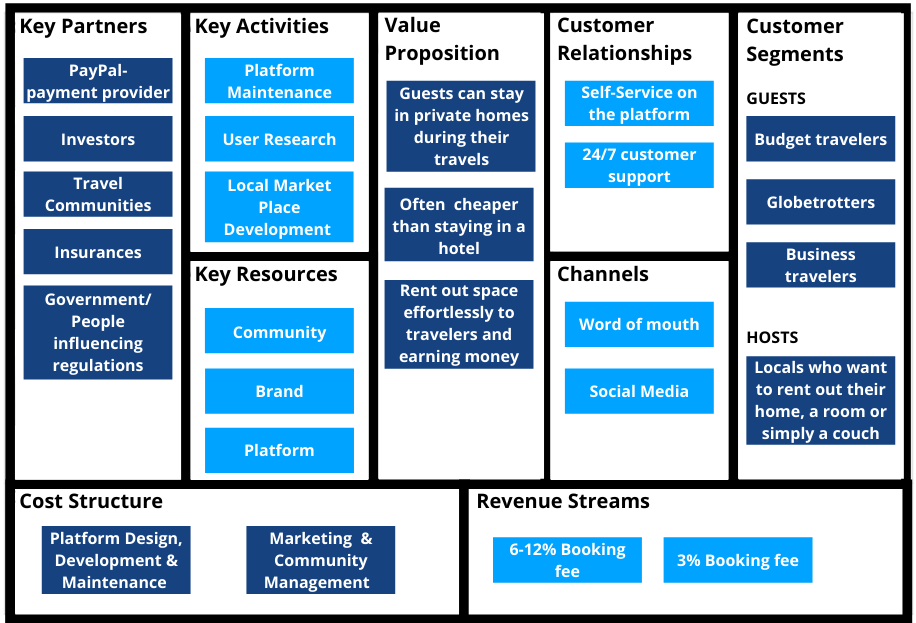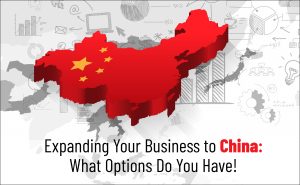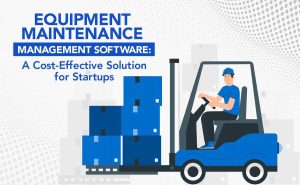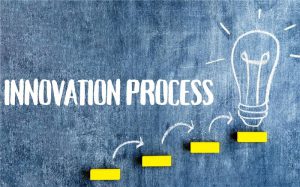As an entrepreneur, you need to get your idea(s) out from your head into a tangible format. This is so that you can communicate with others.
In the past, this usually meant a well-researched business plan. It would often take weeks (more like months) to create. Thus, the Business Model Canvas emerged.
The Business Model Canvas can be defined as a strategic management tool. It establishes and communicates a business idea or concept. Think of the business model canvas as a mission statement for your product roadmap.
Check out our business model example blog to select the best-suited business model according to your business requirement and build a complete canvas thereafter.
Again, there it’s always business model vs business plan confusion brewing among founders. These are an altogether different entity.
In this article, we will give you all the Business Model Canvas details, including its blocks and how to implement them.
We will also chalk out its pros and cons. Finally, we give our verdict on the Business Model Canvas versus Lean Canvas.
Why was it created
The canvas was co-created with many practitioners. It was based on The Business Model Ontology developed by Alexander Osterwalder.
The outcome is a best-seller book, entitled Business Model Generation. It also included the tool Business Model Canvas.
The canvas has been published with a Creative Common License. It is thus published and iterated by many practitioners.
Since then, it has been taught at business schools. It has also been iterated upon to fit more niche businesses.
The Structure and Template of the Business Model Canvas

The right side focuses on the customer (external). In contrast, the left side of the canvas focuses on the business (internal).
Both external and internal factors meet the value proposition. It is the exchange of value between your business and your customer/clients.
Now, let’s take a look at the components of the Business Model Canvas:
1. Key Partners of Business
Key partners are the people you work with to create a strategic relationship. Examples of key partners are distribution partners or suppliers.
We recommend mapping Key Partners to Key Activities. If an activity is key, it’s part of your business model. This is a method to denote which partners are handling different Key Activities for you.
Here are a few things to consider about key partners:
- What key resources do the business receive from these partners?
- What key activities are done by these partners?
2. Key Activities
After figuring out your key partners, the next step is to find out our key activities. As mentioned earlier, key partners and key activities go hand in hand.
Key activities are specific tasks that are fundamental to business operations. An example of a key activity would be the procurement of fresh produce in bulk for a restaurant.
For a product-driven organization, this includes ongoing learning about users. It is also about new techniques to build a better product.
You may be focused on doing many things for a particular set of customers (ex: comprehensive IT for law offices). This includes maintaining expertise on the segment(s). It also includes creating or acquiring products and services that are a good fit.
For an infrastructure business such as electric utility, it includes keeping the infrastructure working reliably and efficiently.
Here are a few things to consider about key activities:
- How do your revenue streams, distribution channels, and customer relationships differ from competitors?
- How do your key activities affect the above factors?
3. Key Resources
The next important step is figuring out the key resources of your business. It is imperative to find out what resources are necessary for your business to function.
Key resources are the assets required to operate and deliver your value proposition. For example, a diamond mining company cannot function without mining equipment. An automotive company cannot work without human capital and expertise.
Key Resources in product-driven organizations are key talent in areas of expertise. It is also about accumulated intellectual property related to their offering.
Scope-driven organizations create synergy around a particular Customer Segment. These companies typically have key know-how about their segment. They also have a repeatable set of processes, and sometimes infrastructure, like service centres.
Infrastructure-driven organizations get economies of scale in a specific, highly repeatable area. An example is a retailer like Walmart.
Key resources can be divided into the following categories:
- Physical – Tangible property such as facilities, buildings, vehicles, machines, etc.
- Financial – Bank lending or seed funds such as the 3F’s (“family, friends, and fools”).
- Human – People that integrate your project.
- Intellectual – Intangible property based on human knowledge such as a patent, etc.
Here are a few things to consider about key resources:
- What specific assets are necessary for business operations and delivering your value proposition?
- Does your company need significant capital or human resources?
4. Value Propositions
At this point, you have covered the left side of the canvas. You have figured out key partners, key activities, and key resources. Now we come to the middle of the canvas, which is value propositions.
Value propositions are the most essential element of the business model canvas. It is the primary driver of business operations. Generally, value is exchanged from a consumer for money when a problem is solved. It also happens when a pain is relieved for them by your business.
To ensure a fit between product and market we use Value Proposition Canvas.
Spotify’s value proposition, “Music for everyone.”, states its mission and offers. Spotify wants to be a music streaming platform that has music for everyone.
An excellent way to approach this for users/customers is by looking at your customer segments. You should then figure out where your product/service solves your customer’s problem. This is based on Maslow’s Hierarchy of Needs.
You may be selling your service or product to another business. Then you are a key partner in them. You help them achieve their Value Proposition for their customers.
It is important to have context around the company’s goals for their Customer Segments and where your business/product/service fits in the value chain.
Here are a few things to consider about value propositions:
- What exactly is your company trying to give to customers?
- What needs are your company satisfying?
5. Customer Relationships
We defined what value propositions we provide for our customers in the previous section. But what relationship do we have with them? This section helps to answer that.
Customer relationships are the types of interactions a company has with its customers.
A beneficial step is to create a User Journey Map of your customers as they interact with your business. This helps clarify the engagement points between you and your customer and the modes used to relate to your customers.
This will also help you start to define your operations as a business and even help you identify opportunities for automation.
Telecommunications companies often have poor reputations and customer relationships. Many of them practice aggressive and predatory sales practices through their call centers.
Whereas a designer suit company will provide excellent customer support. It will give tailoring according to their needs.
It will also work with them to create the suit they want. So, the designer suit company has more fulfilling customer relationships.
Here are a few things to consider about customer relationships:
- What type of relationship does your company have with its customers?
- How much support is provided by your company?
6. Channels
Now we come to figure out the channels of an organization. But what are organizational channels?
Channels encompass a company’s supply, distribution, and marketing channels. It is a must to consider all channels of a company. They should all be functioning together.
A company like Amazon needs integration of fulfilment centers and shipping services. This is to send out timely shipments.
Here are a few things to consider about channels:
- Information – How do we make the products and services of our company known?
- Evaluation – How do we help clients check the value proposition of our organization?
- Buy – How to allow customers to buy specific products and services?
- Delivery – How do we extend our service to our consumers?
- After-sales – What are our policies for attention to suggestions, claims, technical help?
7. Customer Segments
You may have heard of customer segmentation before. It is an activity that can boost organizational efficiency, profitability, and customer service.
Customer Segmenting divides a customer base into groups of people similar in specific ways. This may be based on gender, age, interests, and spending habits.
An example of this would be airline companies. First-class passengers have access to exclusive benefits and luxury travel arrangements. Whereas economy passengers are provided much less support, thus costing less.
Understand your market size and how many people there are in the Customer Segment. This will help to analyze the market from a macro and micro perspective.
A great way to start understanding your consumer is to develop customer personas for each of your Customer Segments.
Here are a few things to consider about customer segments:
- Who is the main focus of your value proposition? Who are you creating value for?
- What are your different types of customers?
8. Cost Structure
In the final stages of the canvas, we proceed into an essential part of operations. It is the cost structure that can make or break a business.
The cost structure refers to how a company spends money on operations. It can be defined as:
-
Cost-Driven
It focuses on minimizing costs and, thus, prices for customers.
E.g., Forever 21 is a fast-fashion company focused on delivering the newest styles at low costs.
-
Value-Driven
It focuses on creating value for its customers, with less focus on cost.
E.g., Gucci is a luxury brand. It is focused on delivering high-quality clothes and accessories. They are designed with the latest trends in the fashion industry.
Here are a few things to consider about cost structure:
- What are the essential costs of your company’s business model?
- How do your costs relate to your revenue streams?
- How do your costs relate to your key activities?
- Are the costs well aligned with the value propositions?
- Are the costs more fixed or variable?
9. Revenue Streams
Finally, we reach the last part after going through each and every stage. In this block, we elaborate on the various revenue streams of an organization.
Revenue streams are a company’s source of cash flows. A company might have many revenue streams.
Revenue Streams are how your business converts your Value Proposition or solution to the customer’s problem into financial gain.
It is also important to understand pricing your business according to the pain of purchase in exchange for solving the problem for your customer.
Apple has many revenue streams between its variety of products and its services. An example is Apple Music.
If you have a startup or are re-engineering the business, it is time to look at where you’re driving revenue and whether it aligns with the rest of your focal points.
Are you charging on value? Perceived value? Is there an actionable analogue in your business?
Here are a few things to consider about revenue streams:
- Does your company have many methods of generating revenue?
- Through what channels do your customers pay?
Classification of the components of the Business Model Canvas
The nine blocks of the Business Model Canvas can be grouped into three major heads:
-
Feasibility
Blocks – Key Partners, Key Resources, & Key Activities.
This includes working with the right tools, employees, and partners. It also includes focusing on the right set of core activities.
We need to run sustainably, or else we’ll implode.
-
Desirability
Blocks – Customers Segments, Customer Relationships, Channels, and Value Propositions.
This is about understanding your customer. This includes what motivates them and how they engage with you. It is also about what makes or breaks a buying decision.
We need to be desirable to our customers, or else we’ll have no sales.
-
Viability
Blocks – Cost Structure and Revenue Streams.
This is about how much we earn and how many we spend. We need to be viable, or else we’ll go bankrupt.
How to create an effective Business Model Canvas
We often see people employing the BMC to better understand how their company creates, delivers, and captures value today. Just as commonly, it’s used to make an idea (for the future) more concrete.
However, in between those two things is ideation. In other words, if you know where you are today, and you’re looking for ways to create business models for tomorrow, you must ideate.
It’s best to start with your current business model for ideation. In other words, if you’re starting from zero, there are probably better methods for ideation.
Here are some great methods for the creation of a Business Model Canvas:
1. Freshwatching
Freshwatching is an ideation method by which you mix and match (or overlay) business models from other companies with your own. This is often totally outside of your business or industry.
It doesn’t matter if the company is an online business, an offline retailer, or even a massively popular one. With Freshwatching, you’re merely looking at your company through the lens of another.
For instance, say your current business model is one by which you sell accounting software to accountants through an extensive reseller channel to other businesses (i.e., B2B).
2. Remove your core
Look at your business model. Find the one thing you are absolutely sure is how your company creates, delivers, or captures value (it’s your special sauce). It could also be an irreplaceable partner or a specific customer segment.
Now, remove that. Chances are your business model now has a big hole in it. Your task: try to fix it. This constraint will definitely give you new ideas.
For instance, BMW also has a core value proposition. It is “The Ultimate Driving Machine®” (i.e., excellent, German-engineered cars built for people who love to drive).
3. Epicenters
In the Business Model Canvas, changing an element in one block will affect another. This lends itself well to a technique called epicenter-based ideation.
With epicenter-based ideation, you effectively have nine different boxes, or epicenters, to play with to generate more ideas.
This works to clear your business model of eight boxes, leaving the focus on one. What would you build if you kept that one?
Amazon did just this when it figured out that it could use its cloud-infrastructure to generate revenue.
Other areas to place focus on using this method:
a. Customer segments (what else could you offer them)
b. Value proposition (what other customer segments could you address?)
c. Revenue streams (what other ways might you sell, lease, or rent your product/service?)
d. Channels (what else could you leverage your channels to do?)
4. Follow Patterns
When you scan the landscape of existing business models, you’ll notice that there are lots of business model patterns.
Business model patterns are like formulas. They can be applied to address a new customer need. They can also be used to create a new revenue stream, etc.
Some well-known examples of business model patterns use subscription revenue streams and/or have product platforms.
There one part of the product relies on the other to make money (think cheap handles, expensive blades, or cheap printers, expensive ink). This is often called bait-and-hook.
5. Ask Trigger Questions
Asking “what if?” is a powerful way to help a team develop great ideas. The key to doing this with the BMC is to come up with a list of questions that challenges what you do presently.
This is perhaps for each box of your business model. As the trigger questions are asked by a facilitator in 10-15 second intervals.
Each individual will write whatever comes to mind on a sticky note. By the end, there should as many sticky notes as there are questions.
If, for instance, you’re BMW and you sell your product today through dealers, what would happen if you sold it directly to customers through an online channel? What would that look like? You get the picture.
Practical tips to fill the boxes of the Business Model Canvas
The Canvas is not an industry or application-specific tool. The focal point of the model is the company itself.
There are different ways to start the process of filling the boxes:
1. With an idea
Start with defining a customer segment’s value proposition.
2. With potential/existing customers
Start with the customer segment. Ask what value proposition you are delivering / could deliver to them and how.
3. With your resources
Start thinking about what key resources you and your partner(s) have. These can be competences, experiences, resources, etc. Then create a customer group’s offer.
4. Some more pointers
a. Use sticky notes because they can be removed or changed.
b. Use different colours for different value propositions and customer groups.
c. Create many different versions and test them with a SWOT analysis
Example of a Good Business Model Canvas – Airbnb

Hotel alternative provider Airbnb concentrates on two significant customer segments. They are guests and hosts. Both can be broken down into subcategories.
The same goes for value propositions. Some are attracted by low prices for a higher value than hotels. Others search for luxurious and unusual experiences.
Airbnb’s most significant revenue source is its fees. Hosts are charged 3 per cent and guests up to 20 per cent.
Thus, Airbnb’s business operations are in alignment with the Business Model Canvas. This has been one of the primary reasons for their astounding success.
Disadvantages of the Business Model Canvas
- It is NOT a strategy. You still need a business plan.
- Doesn’t take into account the competitive arena.
- Often when used is based on assumptions rather than facts.
- Doesn’t take into account sustainability. It misses the broader view of the economy, society, and environment.
- Doesn’t show the different stakeholders involved in the business model.
- Lacks available components
Advantages of a Business Model Canvas
Visual Thinking
The tool allows for straightforward, visual representation for decision-makers to ponder upon. It also clears the organizational direction.
Short and Succinct
The tool encourages teams to keep their suggestions short enough to fit on post-it notes.
Easy to circulate
The tool allows easy access and shareability. It can be passed around so people can grasp its gist and additions to it.
Differences in the Lean Canvas

Lean Canvas was proposed by Ash Maurya in 2012. It is a Business Model Canvas optimized for Lean Start-ups.
The Business Model Canvas was built to encapsulate ‘all types’ of businesses. Hence a few elements didn’t seem to fit well for start-ups.
The Lean Canvas offers a much more ‘problem vs. solution’ approach.
It makes founders focus on the pain points of target customers. They then craft their solutions. This should be the only focus for start-up founders in their ventures.
Lean Canvas replaces:
- ‘ Key Partners’ with ‘Problem.’
- ‘ Key activities’ with ‘Solution.’
- ‘ Customer relationships’ with ‘Unfair advantage.’
- ‘ Key resources’ with ‘Key metrics.’
Ash Maurya also added a few extra elements, including:
- Who are your ‘early adopters’?
- What are the ‘existing alternatives’ that answer customer problems?
- What is the ‘high-level concept’ of your idea?
Key features of the Lean Canvas.
- The Lean Canvas forces a business to think about the 2 primary elements of a start-up. These are customer segment problems and solutions.
- Depicting the ‘early adopters’ makes the business think about the first customer group. These customers will adopt my product, which then helps to specify channels.
- ‘Key metrics’ were also helpful. It makes the business think about the critical needle they need to push the company to move forward.
Conclusion
The Business Model Canvas is an invaluable tool for every organization.
A business model canvas will help streamline planning, development, and execution.
It should align everyone’s objectives and cut inconsistencies. It syncs the various people who contribute to your business objectives.
Thus, it is imperative to prepare a business model canvas in the ever-changing market.
If you have business plan or an idea and looking for funding, get yourself assessed with our free Venture Capital preparedness report.
Alcor private equity and Venture capital firm also empower founders and businesses to grow their companies at all stages.









